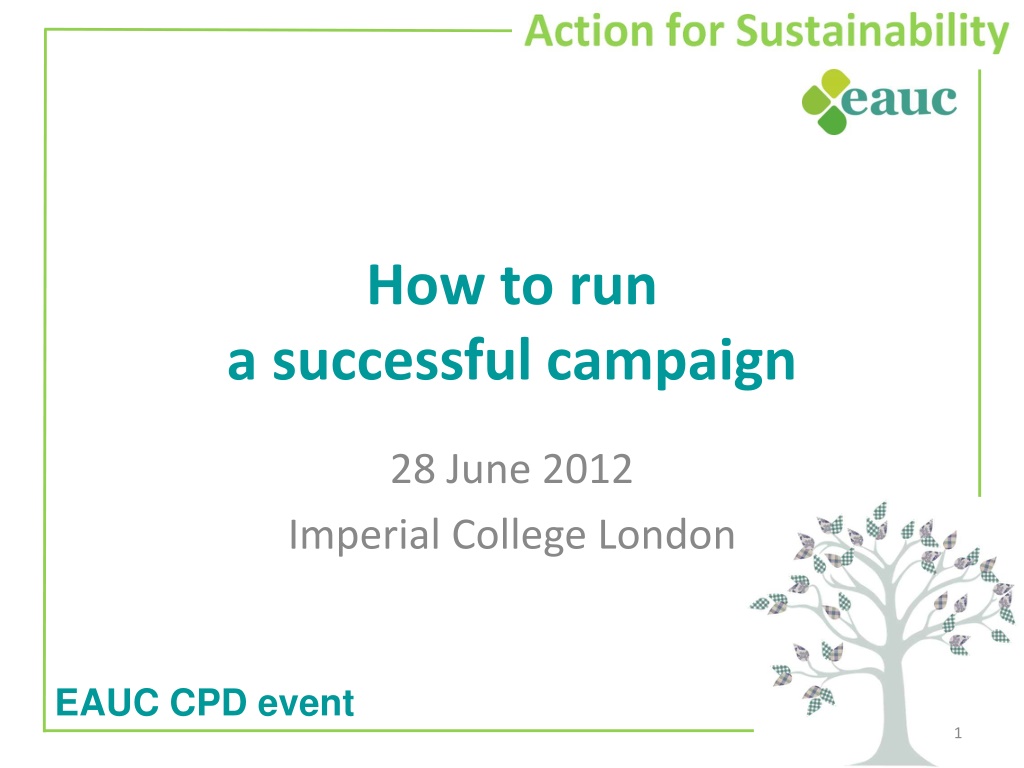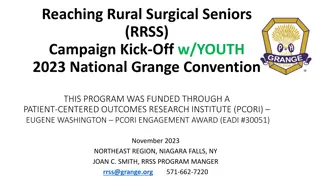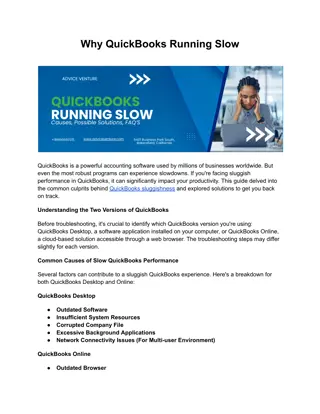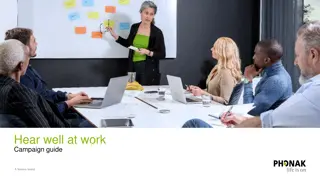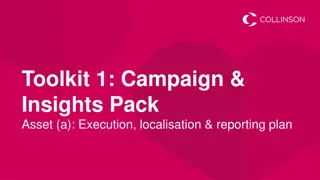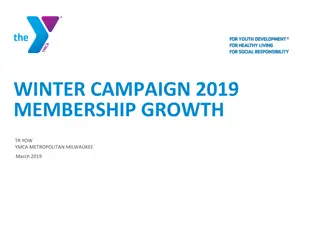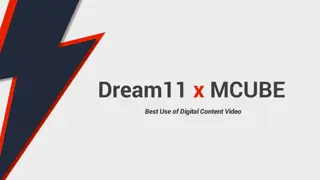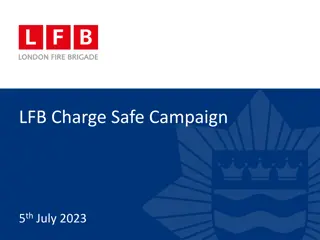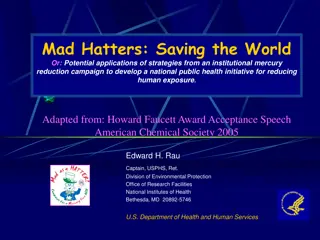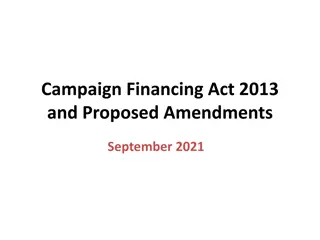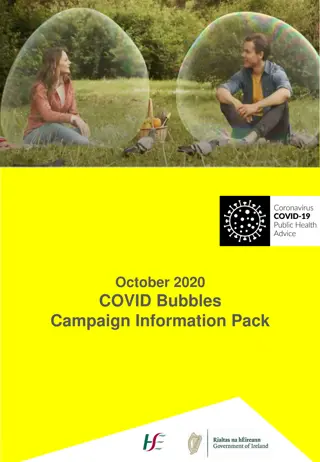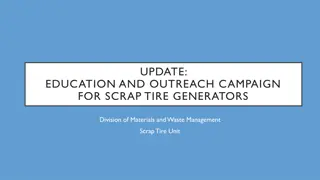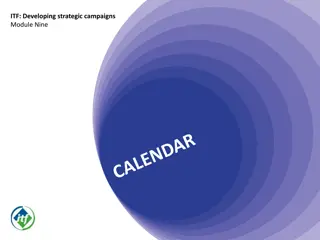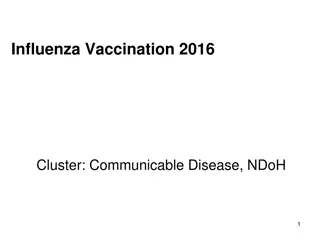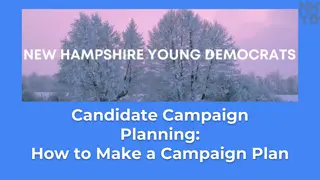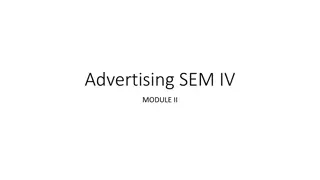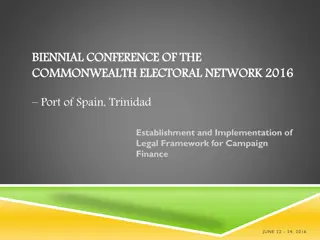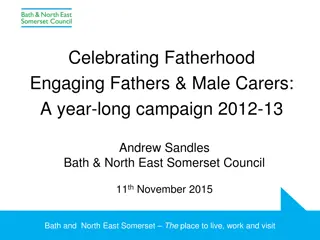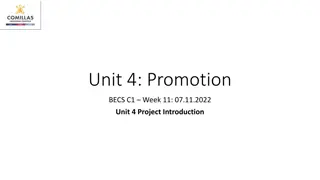Essential Strategies for Running a Successful Campaign
Learn essential theory and practical application for planning and executing a successful behavior change campaign. Explore successful campaigns, identify key ingredients, and overcome barriers to change. Gain insights from shared experiences and understand the significance of public campaigns through engaging discussions and examples.
Download Presentation

Please find below an Image/Link to download the presentation.
The content on the website is provided AS IS for your information and personal use only. It may not be sold, licensed, or shared on other websites without obtaining consent from the author. Download presentation by click this link. If you encounter any issues during the download, it is possible that the publisher has removed the file from their server.
E N D
Presentation Transcript
How to run a successful campaign 28 June 2012 Imperial College London EAUC CPD event 1
Welcome! Kirsti Norris 2
Todays aims To outline some essential theory as you plan a behaviour change campaign. You will leave with a comprehensive plan in place. Look at lots of different campaigns Identify what makes them successful Explore barriers to change Essential campaign ingredients Learning from each other s experiences 3
CHANGE lobbying policy work protest protest 4
Campaign (noun) organised course of action for particular purpose, esp. to arouse public interest Oxford Pocket dictionary 5
Our experiences Discuss a campaign you ve already been involved with. What worked well Why? What made it work well? 6
Tell me, I forget Show me, I remember Involve me, I understand 8
Insider Outsider Collaborative Oppositional Based on establishing shared goals Based on pushing a particular goal Mutual compromise Consistent stance on issue Evidence-based arguments Emotion-based arguments Direct access to decision- makers Indirect access to decision- makers Less publicly focused More publicly focused Systemic process-based Creative and changing methods 12
Understanding change Let me tell you about this great idea we ve adopted Blissful ignorance Denial Commitment It doesn t affect me . EXTERNALISE This is great, I m really enjoying this. I ll ignore doing anything about this and maybe it ll go away. Resistance Exploration INTERNALISE How can I oppose this threat I ll try but it s risky 13
Understanding behavioural barriers the champion who recognises a constraint sees addressing it as an opportunity to increase agency, since by removing it, much wider change is enabled. i.e. if only we knew the barriers we could work to remove them 14
Contextual constraints Issue Subjective / interior Limiting personal values Worldview Emotions Assumptions Etc. Objective / exterior Limitation of one s role Skills Knowledge Relationship set Etc. Personal Group cultures Shared mindsets Shared norms Etc. Political Economic Social Technological Legal Environmental Informational Collective 15
Contextual constraints Factors constraining me from printing double-sided at College Subjective / interior Objective / exterior Personal Collective 16
Exercise Completing a matrix 17
Greg Sandford Internal Communications Officer University of Southampton 19
LUNCH 20
Challenge: to influence the world s largest pulp and paper company (Asia Pulp and Paper) to stop destroying Indonesian rainforests, home of the endangered Sumatran tiger tiger.jpg 22
Barbie accidently tweets a picture of herself, instead of DMing to Ken: 25
October 2011 27
Dave Andrew PhD community groups & social media University of Northampton 28
What makes a successful campaign? 29
getting yourself or your kids eating well, moving more and living longer encouraging customers to save 20 litres of water per person per day (Wessex Water) 30
Who are you trying to influence? What are they interested in? What do you want them to do? Why don t they already do this? Why should they do it? Check your assumptions! 32
Reflection: testing barriers and assumptions How? 33
Engage Raising awareness of the campaign how to go about it? Memorable name Clear branding Clear message - you ve identified what do you want them to do...but how to say it? 34
Engage Core principle of influence It s not what you say, it s how you say it. Telling them what they should do. Clarifying what we want to do. 35
Engage A shared identity needs to be created between messenger and audience The source is one of us The message speaks for us 36
Engage The message needs to: 1. reflect group identity 2. make the group distinctive 3. be a source of group pride We is the most important word in behaviour change Source: Stephen Reicher, Psychology, University of St Andrews 38
Power of Social Proof the majority of hotel guests who encounter the towel reuse signs do actually recycle their towels at least some time during their stay. Increase reuse by 26% The majority of guests who have stayed in this room participate in the towel reuse scheme at least some time during their stay Increase reuse by 33% Source: Cialdini in Yes! 39
Engage Tools for raising awareness of the campaign Launch event Face to face events / communication opportunities Visual displays Posters Email Social media Articles on intranet Tutor sessions Curriculum links 43
Enable Making it easy to take action Easy-to-do actions (easy to adopt) 21-day (habit forming) actions Targets Materials energy monitoring plug / literature with tips / switch-off booklet Training programmes / events Pledges Active and passive commitments 44
Enable Making it easy to take action In our Target Twenty campaign, we are encouraging customers to save 20 litres of water per person per day. Using 10 litres less a day will leave 20 litres more in the environment. 45
Support Encourage everyone to get involved Visible support Best practice sharing Recruit champions Set up support groups Facebook group Twitter Competitions Advice and information 46
Support 47
Feedback How will you share and celebrate successes? Communications on progress Celebrate improvements (motivates those already taking action and encourages others to get involved) Rewards? Recognition? Articles in a newsletter / on intranet / twitter post 48
Feedback 49
